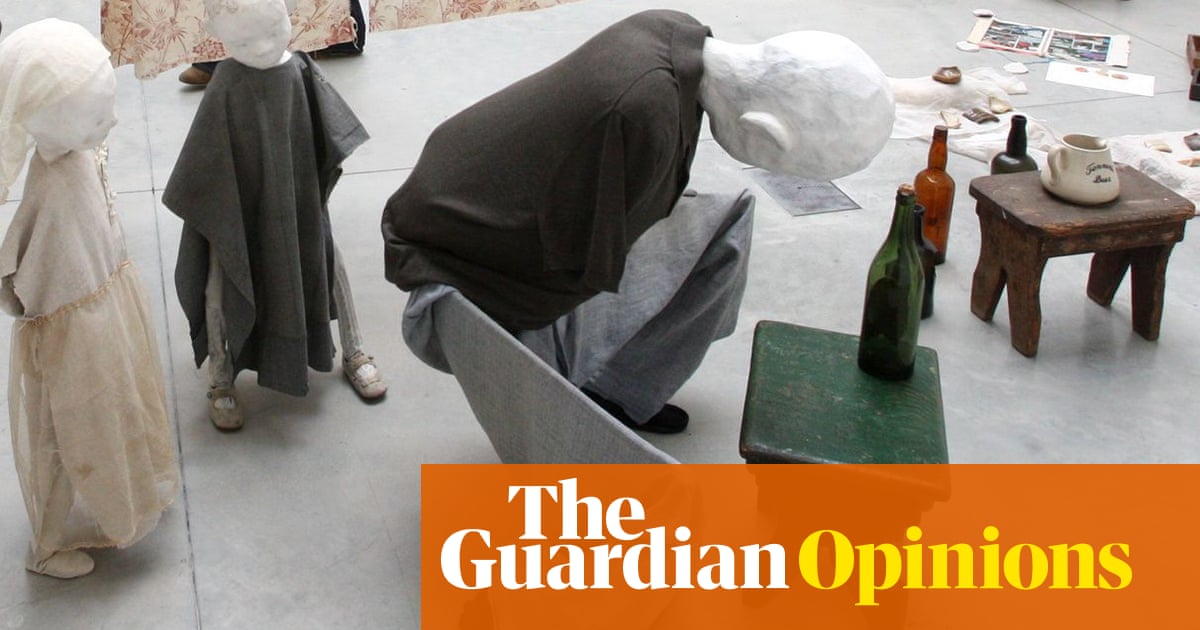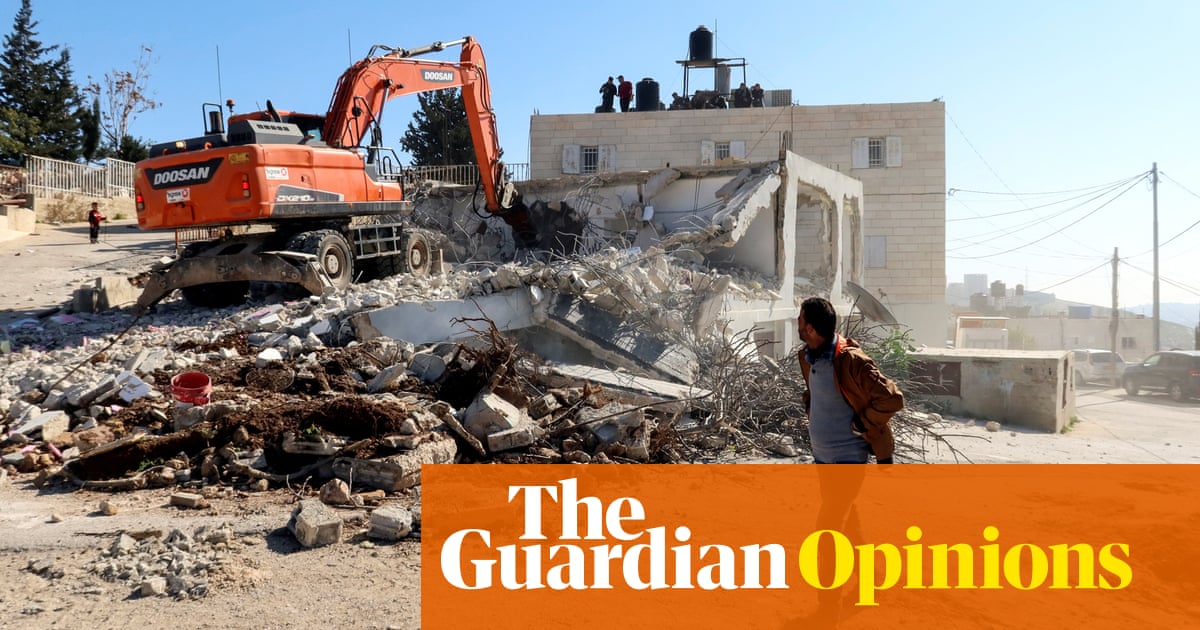
Aman crouches in despair. His back is hunched and he is facing down, leaning over an empty bottle. His features are unidentifiable and his body is frail as he struggles to support himself on impossibly spindly legs, visible through his trousers. It’s an image of hardship, heightened by the four infants who stand around him, waiting. They look stoic, yet you can sense their vulnerability. What does he have to give?
I saw this installation – called Untitled (Possil, At Last) – at the Fitzwilliam Museum in Cambridge last week. It’s by the Northern Ireland-born artist Cathy Wilkes and is part of Real Families: Stories of Change, an exhibition exploring the dynamics of family life. This particular work was the entire show’s inspiration. Its curator Susan Golombok, a family psychologist, saw it at Tate Liverpool in 2015, having slipped out of a conference. Golombok was stunned by its emotive power, astonished that one scene seemed able to sum up years of her research.
The title of Wilkes’s work, which was made a decade ago, is a reference to Possil Pottery, the 19th-century Glasgow company that created some of the finest porcelain in Britain. Untitled features artefacts – bits of jugs, old kilns and bottles – excavated in 2010. Yet, for all this, in its visualisation of human suffering, Wilkes’s work could not feel more immediate or universal. One cannot help but be moved by it. Research and facts are vital for understanding – but Wilkes shows that art can offer something more. It can look at real-life situations from within, helping us process and connect with human experience in all its rawness.
The headlines we are currently reading are almost too horrific to comprehend, detailing scenes of violence played out on a neverending news cycle. While art can’t give us the answers, it can, I think, convey emotion on a primal level, in ways that transcend time, class and demographics. From printmaking to abstraction to installations such as this one, certain works – whether they were made 10 or 100 years ago – have the power to speak to the very basics of an individual’s experience, our shared humanity. Parent, carer, lover, child – no one could look at these works and not find themselves grappling with their emotions, feeling for the grief, suffering and loss endured by innocent people.
For me, perhaps the most emotionally raw works in art history are the prints made by German expressionist Käthe Kollwitz. Working at the cusp of the 20th century, Kollwitz witnessed at first-hand the emotional and physical impact of industrialisation – and then, soon after, of war. She captured the grief-stricken and oppressed, from mothers wrenched apart by death, to individuals full of anguish and terror at what they have witnessed. She once said: “I agree with my art serving a purpose.”
A visceral example is 1903’s Woman with Dead Child, in which a mother presses her head into the body of her offspring, which seems to muffle her cries. Eyes full of tears squint, uncomprehending, as she clutches this child reduced to a pile of bones, skull falling back – almost angelically – as life drifts away.
Over a century later, the Colombian-born artist Doris Salcedo symbolised the loss of anonymous lives through her huge, unsettling towers of empty chairs, which referenced the Colombian conflict, the government’s battle with crime syndicates and far-right and far-left groups. More literally, the power structures and futile lines of division that cause such deaths were tackled in Shibboleth, a work that saw Salcedo drill into the concrete floor of Tate Modern’s Turbine Hall to form a crack that split the vast room in two.
In abstract form, Salcedo presented separateness, danger, conflict and violence. By the very nature of its title, which means a custom, principle or even word identifying a certain group of people, Salcedo gives voice to the oppressed, explaining that she works “from the perspective of the victim”. Varying in depth and width, the work could be viewed from a platform up high, from the floor up close, or in your peripheral vision as you walked through or past the room. In that colossal space, the crack seemed to speak of power structures, of those in control and of those silenced.
The work is still visible today: a ghost-like mark, an almost healed wound, a reminder that whenever violence or oppressive systems are unleashed, the harm they cause will forever remain – scars in the landscape or in the minds of generations to come.
Artists look at the world from within, drawing on real, human experiences. They take us to places we have never been to before, but that we recognise instantly. They teach us about basic emotions that headlines can’t touch. They make individual suffering universal. But they can also provide a lesson for those in power, showing how their actions affect communities, cause trauma down the generations, and harm those who have done nothing wrong. Art, no matter when it was made, can teach us that violence is never the answer.












